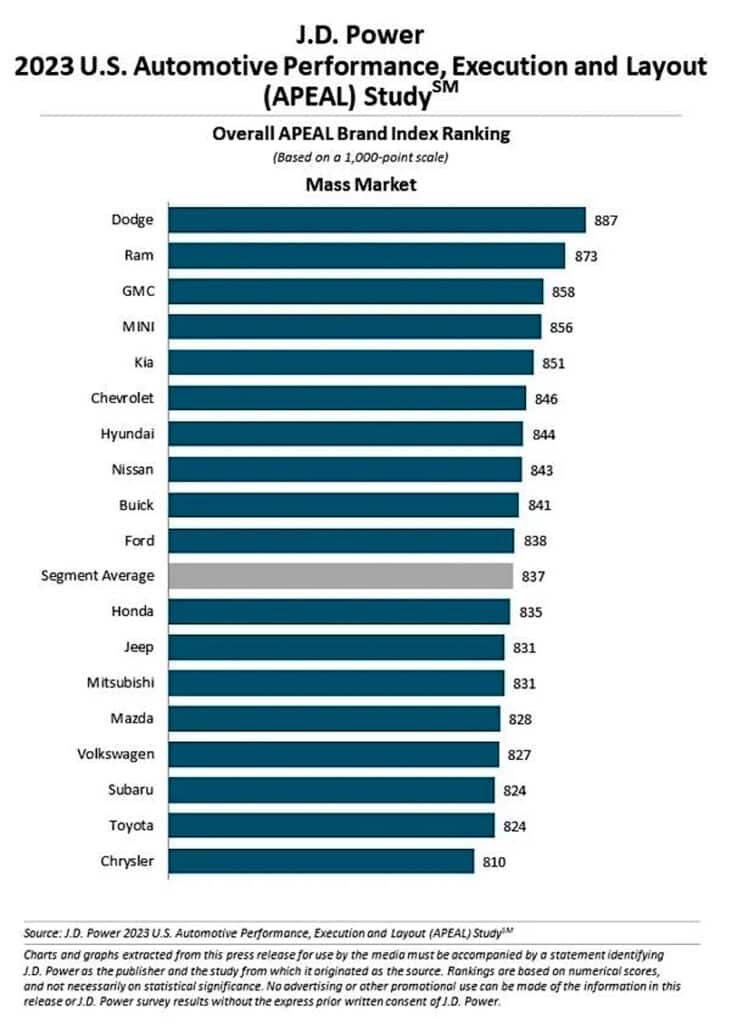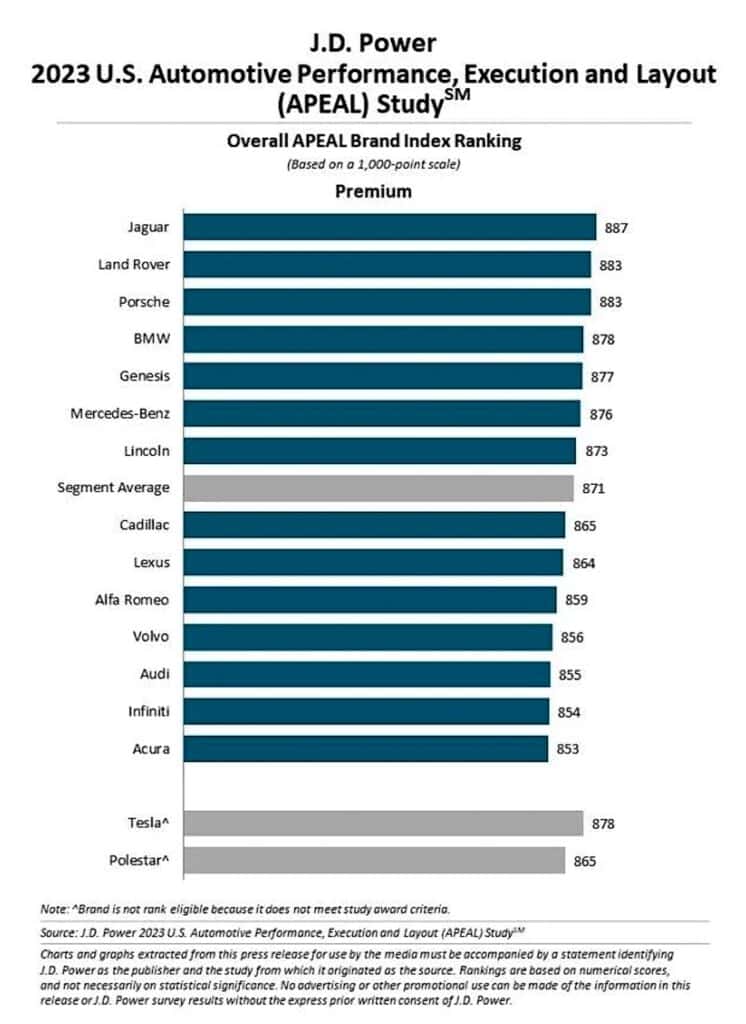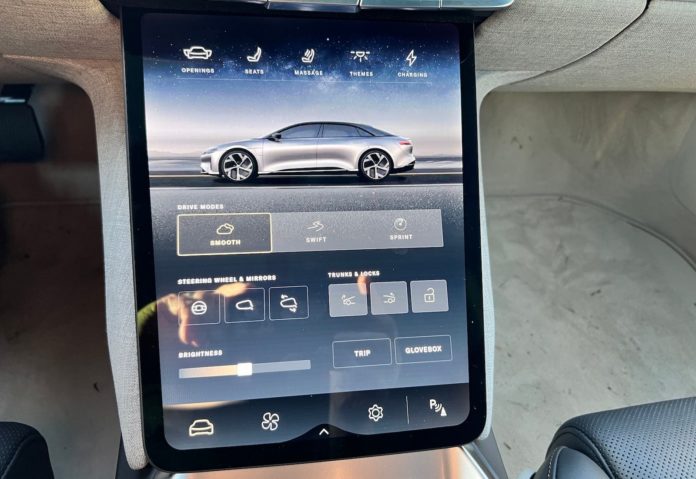The prices of new vehicles continue to rise, but the satisfaction that owners are getting with those vehicles continues to decline. That’s the message automakers should get from J.D. Power’s 2023 Automotive Performance, Execution and Layout Study.
According to the 2023 study, overall satisfaction is 845 (on a 1,000-point scale), a decrease of two points from a year ago and three points lower than in 2021. It marks the first time in nearly three decade-old study there have been back-to-back declines.
“The decline in consecutive years might look small, but it’s an indicator that larger issues may lie under the surface,” said Frank Hanley, senior director of auto benchmarking at J.D. Power. “Despite the technology and design innovations that manufacturers put into new vehicles, owners are lukewarm about them.
“While innovations like charging pads, vehicle apps and advanced audio features should enhance an owner’s experience, this is not the case when problems are experienced. This downward trajectory of satisfaction should be a warning sign to manufacturers that they need to better understand what owners really want in their new vehicles.”

The study is based on 10 factors, officials noted, and nine declined year over year. The only factor to improve is fuel economy (771), which is 15 points higher than in 2022. The factor with the largest year-over-year decline is exterior, decreasing to 888 from 894.
Satisfaction with exterior styling on new models in 2023 is particularly unremarkable, scoring only three points above carryover models.
What’s the problem?
Followers of these kinds of studies will likely guess the problem right away: infotainment technology. Automakers have struggled for years to develop systems that appeal to a wide range of uses and make them work consistently.
Only 56% of owners prefer to use their vehicle’s built-in system to play audio, down from 70% in 2020. Three of the most common uses for built-in systems are: owners looking to make phone calls; voice recognition; and navigation — with less than half (45%, 37% and 43%, respectively) of owners preferring to use their vehicle’s built-in system for these functions.
Systems like Apple CarPlay and Android Auto and their portability to move from vehicle to vehicle with no real changes to upset users only makes it more difficult to make vehicle owners happy. Knowing this in advance, makes General Motors move to stop offering the availability of these systems in the near future and only offer its native setup look like a major risk. To be fair, GM officials say owners will still be able to use the systems, they just won’t be offered as standard equipment.
Winners and not winners

Jaguar ranks tops among premium brands with a score of 887. Land Rover (883) and Porsche (883) tied for second and BMW (878) came in fourth.
Dodge ranks highest among mass market brands for a fourth consecutive year, with a score of 887 — tying Jaguar for best overall. Meanwhile Ram (873) ranks second and GMC (858) is third.
Hyundai Motor Group set a record for the most model-level awards with nine awards. Next was BMW AG (five awards) and Toyota Motor Corp. (three awards).
Other findings
Models that have Android Automotive Operating System (AAOS) with Google Automotive Services (GAS) score higher in the infotainment category than those with no AAOS whatsoever. AAOS without GAS receives the lowest scores for infotainment of the three categories, Power noted.
Additionally, battery-electric vehicle owners were happier with the range they got from their vehicles and the owners of vehicles powered by internal combustion engines were with their fuel economy numbers.
Overall APEAL scores were still higher for gas-powered vehicles than their battery-electric counterparts, but the gap is closing: 843 to 840. Those numbers didn’t include Tesla, which earned its own category.
Tesla, with a score of 878, remains one of the higher performing brand, but its score in 2023 is nine points lower than a year ago when Tesla was first included in the study. Satisfaction scores declined year over year in all 10 factors.

